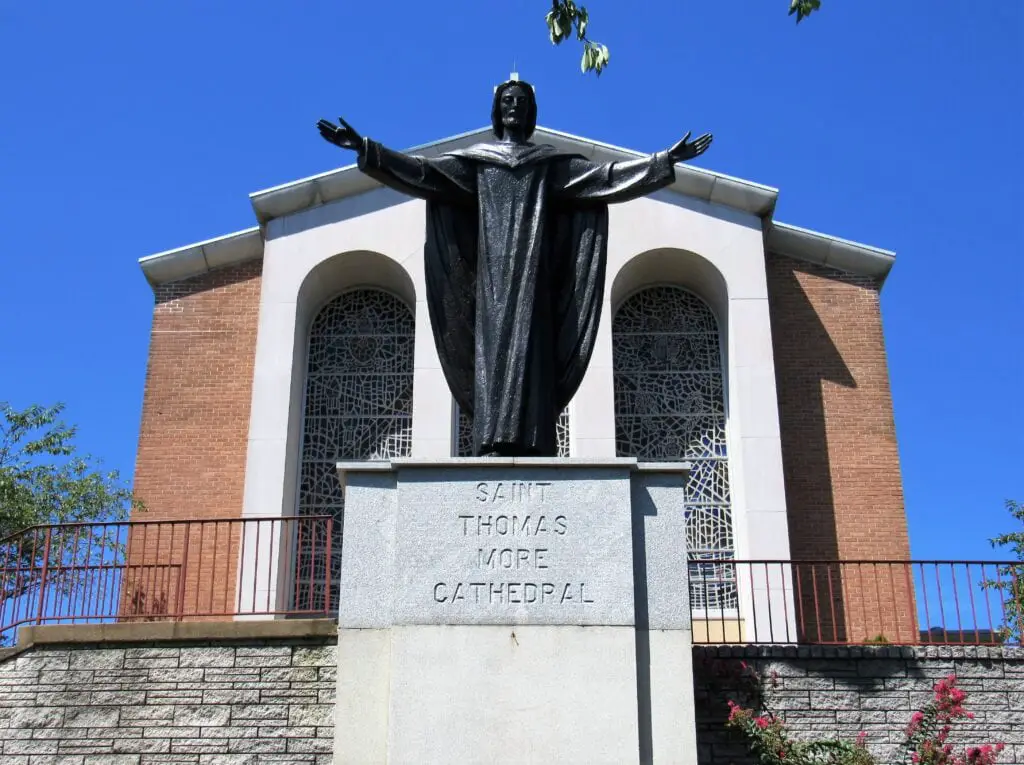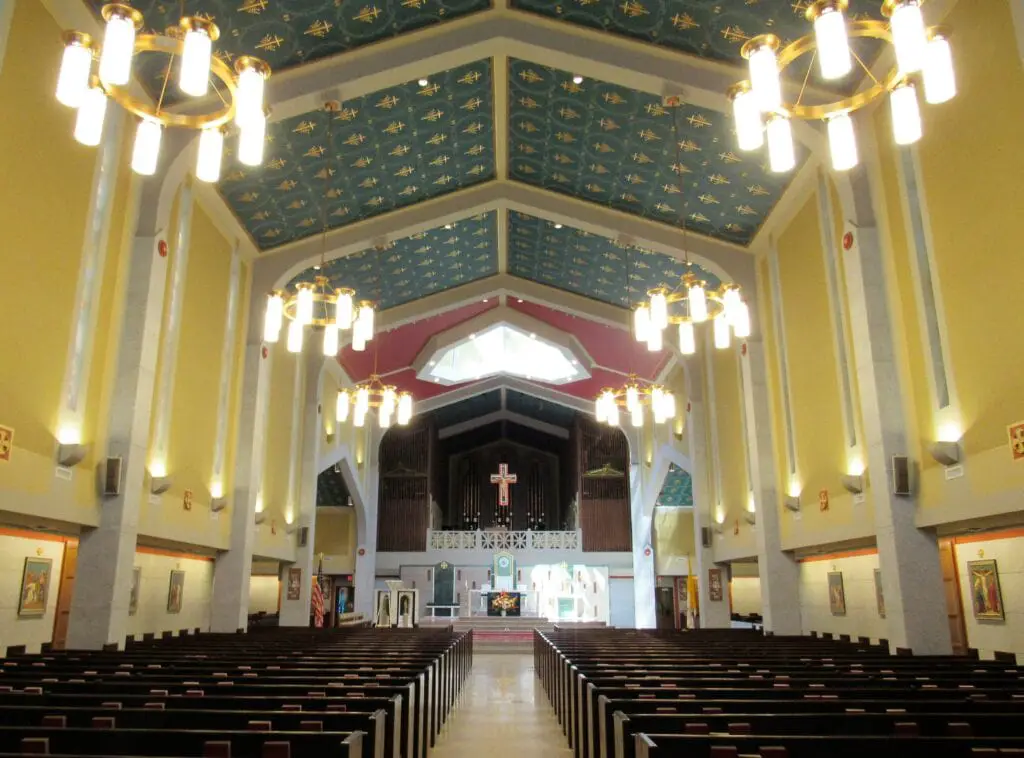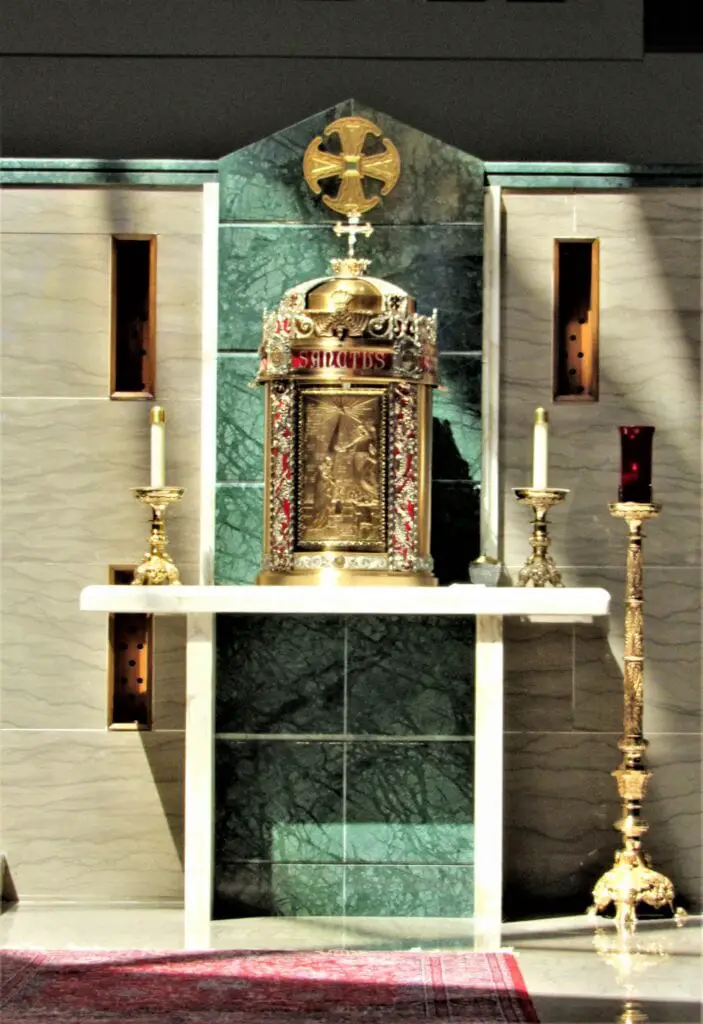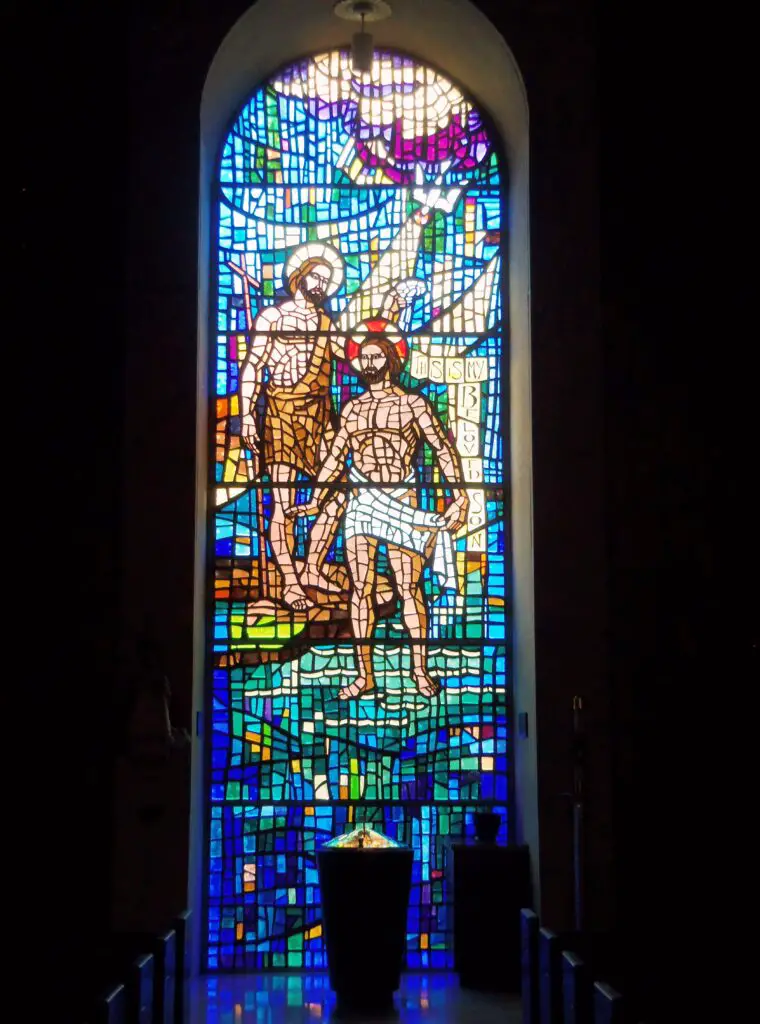Delving into the Rich History
Nestled in the heart of Arlington, Virginia, the Cathedral of Saint Thomas More is a testament to the region's enduring faith and community spirit. The cathedral's history is deeply intertwined with the growth and development of Arlington itself, making it a significant cultural and historical landmark.
The cathedral's journey began in 1938 when the parish was established. Named after St. Thomas More, a revered figure known for his roles as an English lawyer, social philosopher, author, statesman, and noted Renaissance humanist, the cathedral was a beacon of hope and faith in its early days.
The initial Masses were held in a humble setting - a school gymnasium, which served as the sanctuary until 1950.
A strong sense of community marked this period, as parishioners came together to worship in a space that, while not a traditional church, was filled with a shared understanding of faith and purpose.
1961 the current church was constructed, a significant milestone in the cathedral's history. Built above the original 1950 sanctuary, the new church was an architectural marvel that reflected the growth and evolution of the parish.
The cathedral's architecture, a blend of traditional and modern elements, visually represented its commitment to maintaining its historical roots while looking toward the future.
Another significant event in the cathedral's history was its elevation to a cathedral in 1974. This event marked the formation of the Diocese of Arlington, created when the northern counties of Virginia split from the Diocese of Richmond.
The elevation of the church to a cathedral was a testament to its growing importance and influence in the region.

The Cathedral Organ: A Symphony of Faith
One of the most notable features of the Cathedral of Saint Thomas More is its magnificent organ. Initially installed in the 1960s, the organ is more than just a musical instrument; it is a central element of the Mass, enhancing the spiritual experience for parishioners.
In 1980, the organ underwent a significant redesign and expansion under Robert Wyant, a renowned organ builder. Wyant's work transformed the organ into a 53-rank masterpiece, a testament to his skill and dedication.
Wyant's association with the cathedral extended beyond his work on the organ; he served as the cathedral organist from 1964 to 1998, leaving an indelible mark on the cathedral's musical legacy.
St. Thomas More Cathedral School: Nurturing Minds and Hearts
The St. Thomas More Cathedral School, established in 1944, is another integral part of the cathedral community. Offering education from pre-kindergarten through eighth grade, the school has been a cornerstone of the community, nurturing the minds and hearts of countless students.
From 1945 to 1998, the Sisters, Servants of the Immaculate Heart of Mary operated the school. Their dedication and commitment to education played a crucial role in shaping the school's ethos and values.
Today, the school continues to thrive, with approximately 400 students, and remains a beacon of learning in the community.

Cathedral of Saint Thomas More: A Vibrant Hub of Community Life
Today, the Cathedral of Saint Thomas More is a vibrant hub of community life. With approximately 2,500 members, the cathedral community is a diverse and dynamic group of individuals and families.
The community is actively involved in various activities and events, from religious observances to social gatherings, fostering a sense of togetherness and shared faith.
Architectural Splendor: A Closer Look
The Cathedral of Saint Thomas More is a place of worship and a remarkable architectural landmark. Its design and structure reflect a harmonious blend of tradition and modernity, making it a sight to behold.

As you approach the cathedral, the first thing that catches your eye is its imposing façade. The cathedral's exterior, with its clean lines and elegant simplicity, exudes a sense of grandeur and reverence.
Upon entering the cathedral, one is immediately struck by the vast, open space of the nave. The high ceilings and wide aisles create a sense of expansiveness, a physical manifestation of the cathedral's inclusive spirit. The altar, located at the far end of the nave, serves as the focal point, drawing the eye and heart towards it.
One of the most striking features of the cathedral's interior is its stained glass windows. Each window is a work of art, intricately designed and meticulously crafted. The windows depict various scenes and figures from the Bible, each telling a unique story of faith.

As sunlight streams through these windows, it illuminates the vibrant colors and intricate patterns, creating a mesmerizing display of light and color. These windows serve not just as decorative elements but also as visual narratives that enrich the spiritual experience of the Mass.
Conclusion
The Cathedral of Saint Thomas More, with its rich history, spiritual significance, and architectural beauty, plays a vital role in the local community and the Diocese of Arlington.
It continues to contribute to its members' spiritual and educational development, standing as a testament to Arlington, Virginia's enduring faith and community spirit.
